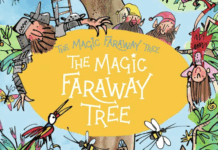Discover how Blue Fox is reshaping the indie film financing marketplace with debt solutions, pre-sales, and global distribution power.
In the glamorous chaos of the 2024 American Film Market in Las Vegas, one session stood out like a spotlight in a blackout. Titled the only “hot seat” of the week, the indie film financing discussion featured Patrick Rizzotti, President of Blue Fox Financing, and James Huntsman, Owner of Blue Fox Entertainment.
Blue Fox is reshaping the indie film financing marketplace
At the 2024 American Film Market (AFM), the indie film world feels more connected than ever, with creative energy and deal momentum flowing from a year of vibrant markets across the globe.
Projects that sparked interest in Berlin at the European Film Market or found early champions in Cannes’ Marché du Film are now finding traction in Santa Monica.
Hong Kong’s FILMART brought bold new voices from Asia, while Paris’s Unifrance Rendez-Vous and London’s BFI Film Market kept the spotlight on auteur-driven European cinema. Closer to home, New York’s Gotham Week gave a platform to daring independents, while cities like Chicago, Philly, and Miami—through festivals and grassroots showcases—helped indie filmmakers build buzz and secure key connections.
Los Angeles continues to be the heartbeat of production, while Las Vegas, with industry gatherings like CinemaCon, hints at what kind of indie stories might actually find their way to the big screen. AFM brings all these threads together—a meeting point where passion projects, scrappy financing plans, and global dreams collide.
They weren’t there to pitch films or deliver Hollywood platitudes—they were there to break down the hard math and real mechanics behind what’s quietly becoming a game-changing independent film financing marketplace.
And judging by the room full of filmmakers clutching notebooks and dreams, their insights hit a nerve.
Independent film financing marketplace is no longer just a string of industry jargon—it’s the core of a movement that could reshape how films get made.
“Almost every single one [of my films] were financed somewhat independently,”
Patrick Rizzotti
who has produced more than 20 films.
“A combination of a minimum guarantee, a tax credit and equity.” The challenge, he explained, was always the same: debt financing was prohibitively expensive, and options were few.
Enter the Blue Fox solution.
Building a Marketplace Where None Existed
Three years ago, Rizzotti and Huntsman weren’t looking to build an empire—they were looking to solve a problem.
“We created a marketplace that revolves specifically around debt and gap financing,”
Rizzotti told the audience
The model, born out of frustration, now includes over 50 financiers ranging from traditional banks to individual investors.

But in 2024, something significant happened: Blue Fox Financing was absorbed by Blue Fox Entertainment. “Now we have a lot of flexibility because we can lend on these debt and gap deals and really can move as fast as the producers can move,” Rizzotti noted. That merger turned the company into a one-stop-shop, marrying financing with distribution—a rare dual offering in indie film.
Huntsman, always blunt, put it like this: “The movie business is not rocket science. It’s actually quite simple… What he has done is something different that didn’t exist in the market.”
Pre-Sales, Tax Credits, and the Myth of the $200K Indie
One of the most pressing questions at the session came from a filmmaker trying to kick off a $200,000 feature.
Rizzotti didn’t sugarcoat it:
“It is almost impossible to do everything I just said [on a budget that low].”
Why? Many states require minimum spends to qualify for tax incentives—California, for instance, generally won’t consider projects under $1 million.
Instead, Rizzotti urged ultra-low budget filmmakers to focus on finishing their films independently and approaching companies like Blue Fox afterward with a completed project. “Go to someone like Blue Fox with the finished film,” he advised. “It’s going to be hard to piece together the financing when you’re dealing with anything roughly under a million dollars.”
Distributors Want Proof, Not Dreams
If you think landing a distributor means just having a polished pitch deck, think again. Huntsman cut to the chase: “I will shut [bad pitches] down faster than you because most pitches are absolutely terrible.”
What does he want to see? Finished films or projects with real momentum. “You have to show the investor that you’re thinking out of the box,” said Rizzotti, suggesting producers attach known producers or influencers even before finalizing cast. “There’s something attached that’s like, ‘Oh crap, that’s a really cool kind of addition to the project.’”
In other words, name recognition isn’t just Hollywood fluff—it’s currency.
Why Blue Fox Financing Works (and What Doesn’t)
The independent film financing marketplace Rizzotti and Huntsman have built thrives because of transparency and realism. “The financing assessment is all math,” said Huntsman. “The entertainment side is subjective.” It’s a potent combination: hard data meets human storytelling.
But what doesn’t work? Drama with no cast, for one.
“I doubt any of you go to the drama section and try to find a small movie that has no cast,”
Huntsman noted.
And forget about promising tax credits that are already spoken for. “We see that a lot. It really is like starting from ground zero,” said Rizzotti.
Instead, the winning formula is part math, part relationships. And increasingly, part branding.
Branding as Leverage: The Red Bull Example
Brand integration is often overlooked in indie financing—but not by Blue Fox. “We brought in Red Bull as a partner and actually created a character that was drinking Red Bull through the whole movie,” said Rizzotti. That one partnership led to music licensing, marketing support, and distribution.
While Huntsman was quick to note that product placement doesn’t necessarily boost theatrical distribution, it can still move the needle. “From our standpoint, it single-handedly sold the movie to E1,” Rizzotti explained. For filmmakers looking to stand out in a sea of 17 new releases each week, every advantage counts.
Why Smart Indies Should Look to Blue Fox
In a landscape flooded with uncertainty, Blue Fox is offering something rare: clarity. They’re not just a distributor. They’re not just a lender. They’re a marketplace for independent film financing that actually understands the grind.
If you’re a filmmaker trying to get a project off the ground, especially in markets like Los Angeles, Manhattan, or Berlin, the takeaway is clear: your best bet might not be in pitching everyone—it’s in structuring your project like a business and calling Blue Fox when you’re ready to move.
Ready to get your film made? Study the Blue Fox model, focus your equity strategy, and rethink what makes your film irresistible—not just to audiences, but to financiers.
Discover how Blue Fox is reshaping the indie film financing marketplace with debt solutions, pre-sales, and global distribution power.







![The Rise of Wisconsin Rye Whiskey: A Flavorful Story of Community and Craft [Exclusive Interview with John Mleziva] Explore the rise of Wisconsin rye whiskey, its Driftless flavor, and the community-driven craft behind State Line Distillery’s celebrated five-year release.](https://dailyovation.com/wp-content/uploads/2025/12/Screenshot-2025-12-02-at-8.44.22-PM-218x150.jpg)









![Get Your Indie Movie Made (Responsibly): Jeff Caruso of Wrapbook Leads the AFM 2025 Film Finance Conversation [Exclusive Interview] American Film Market](https://dailyovation.com/wp-content/uploads/2025/11/AmericanFilmMarket2025-1-218x150.jpg)














